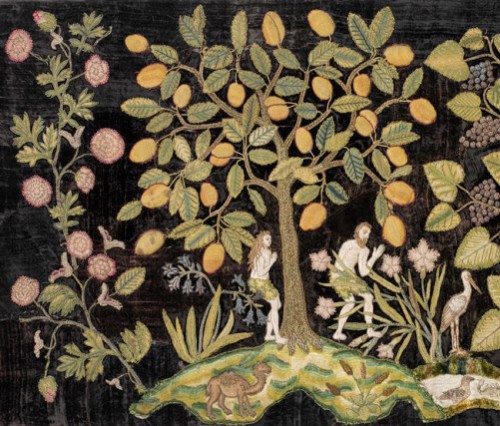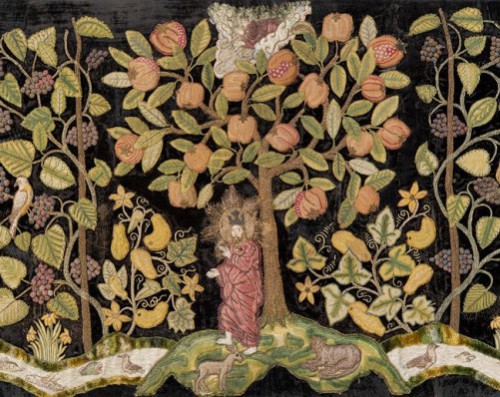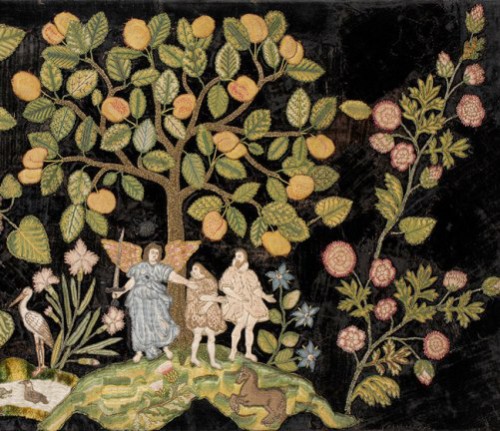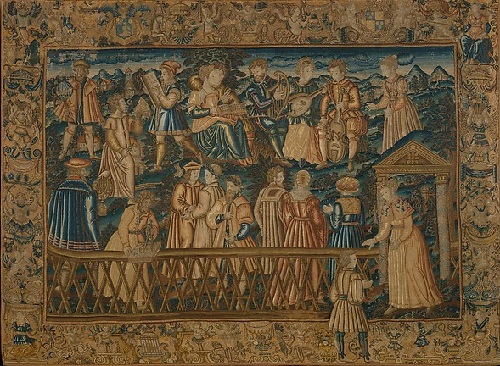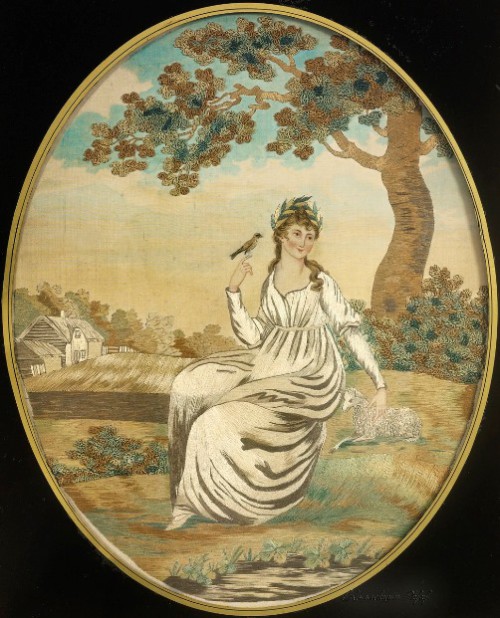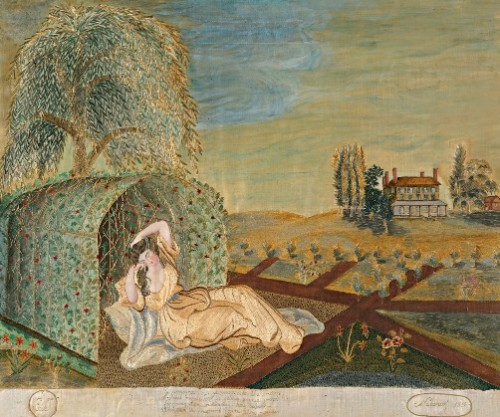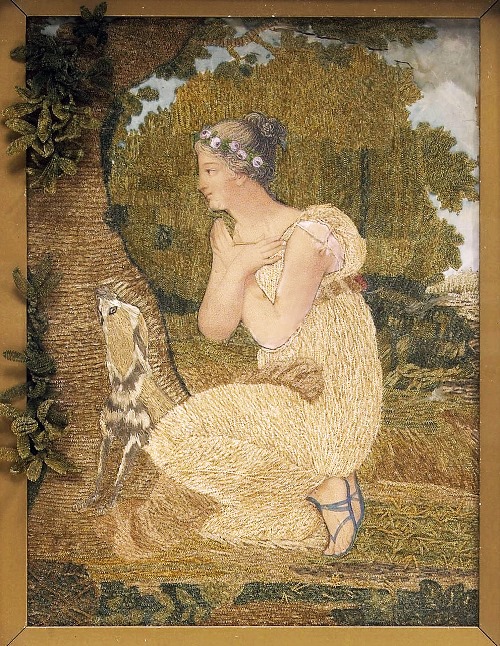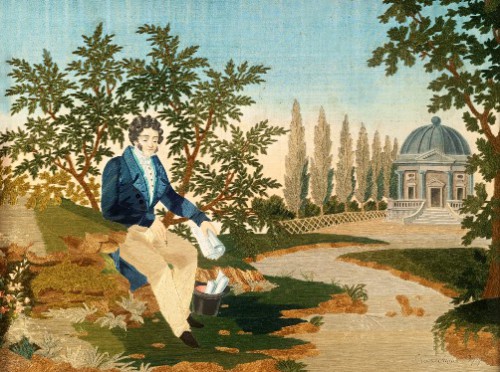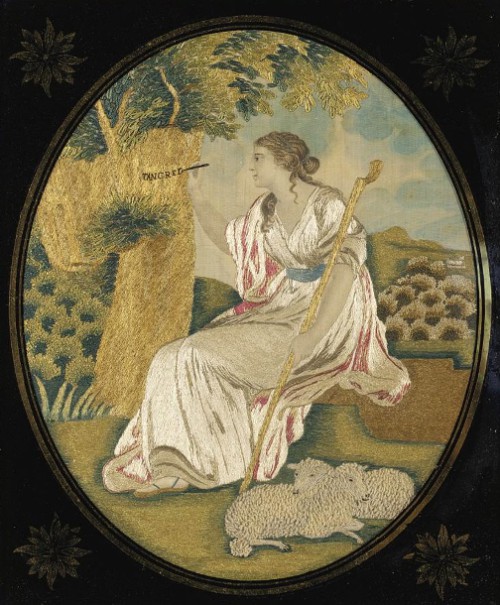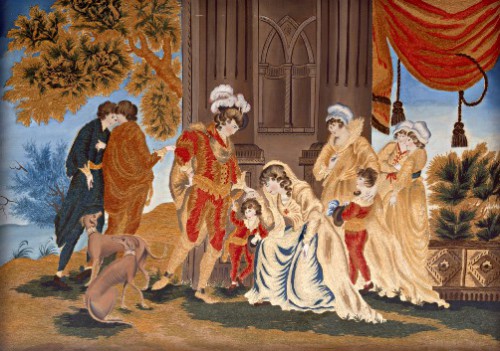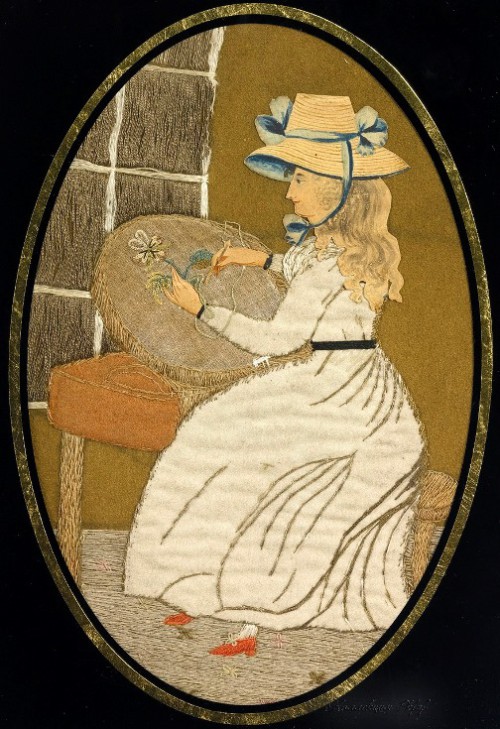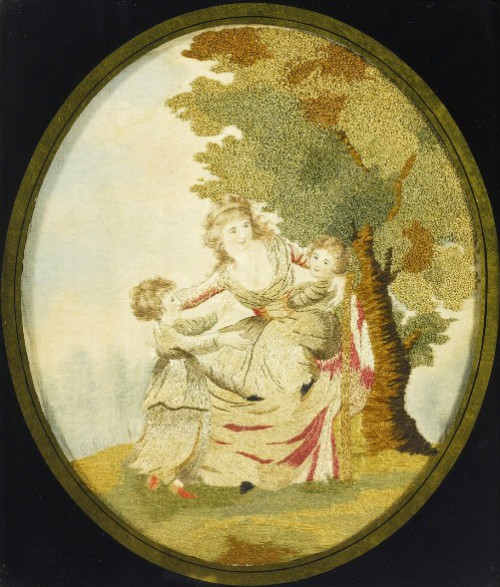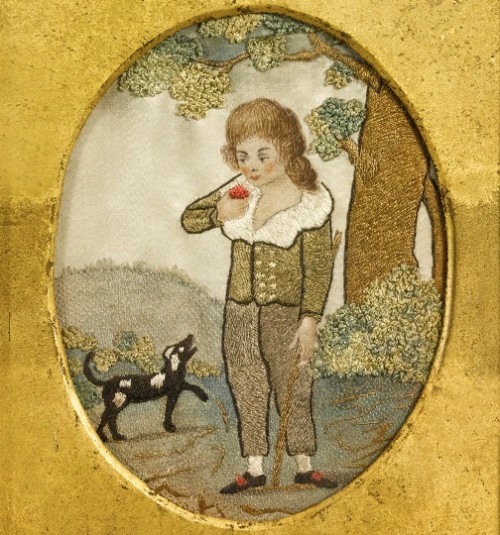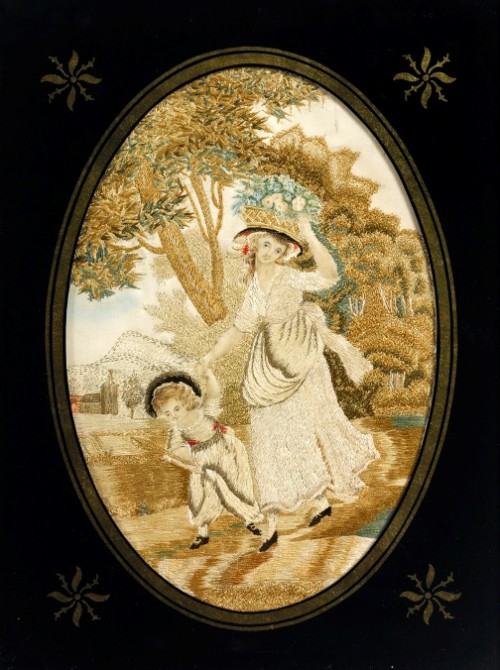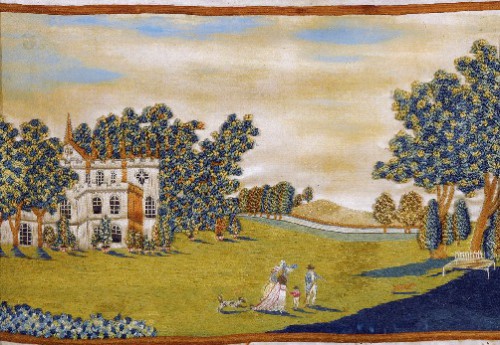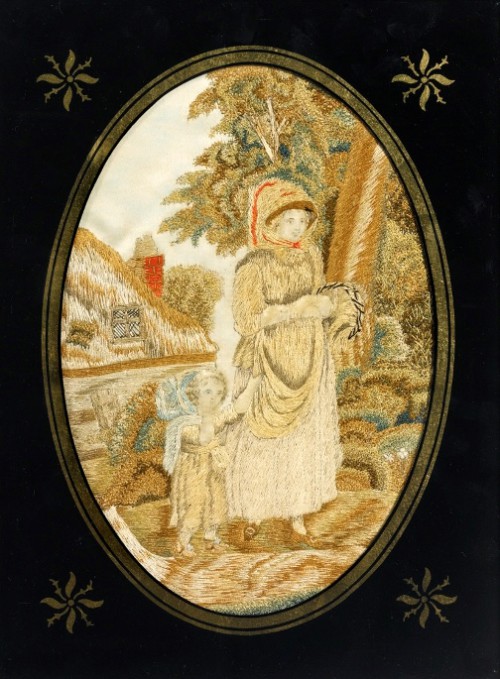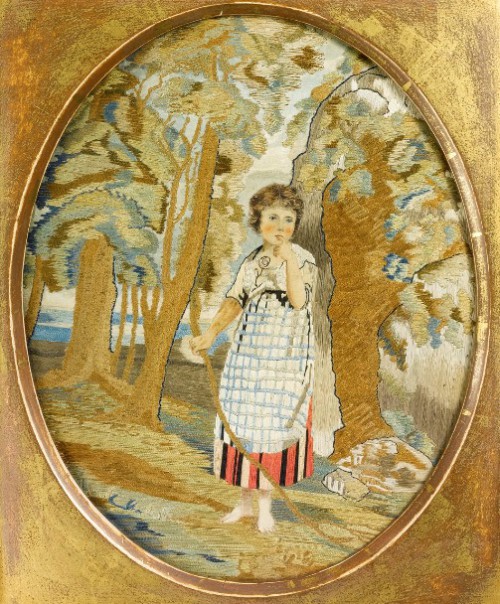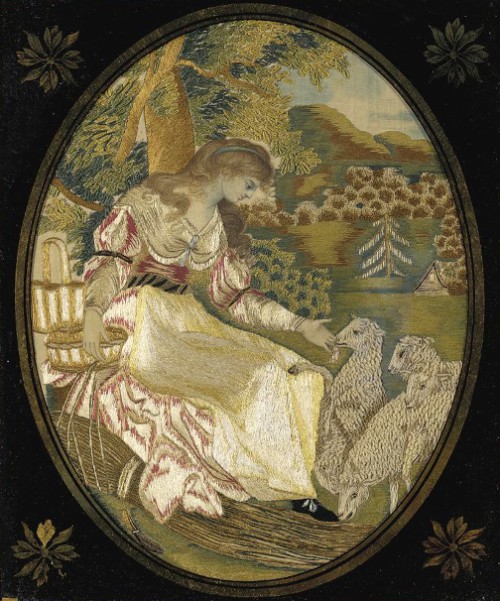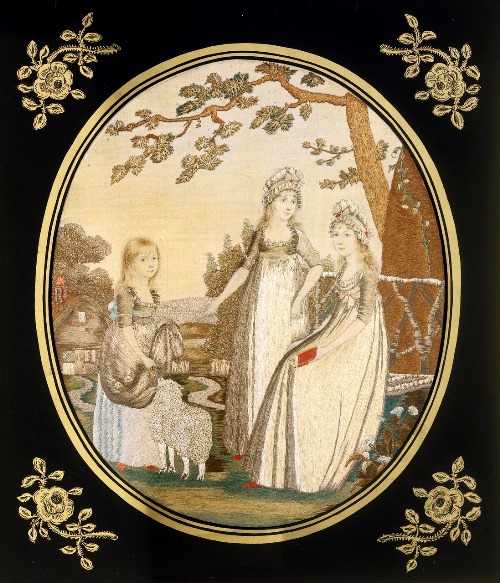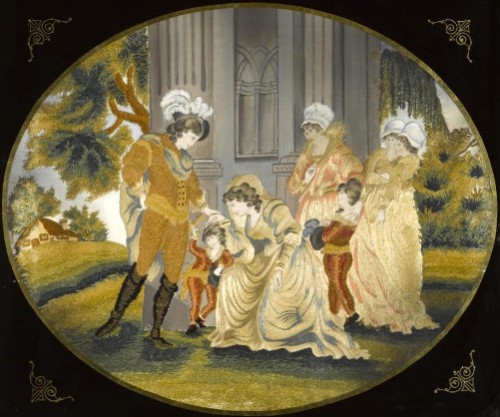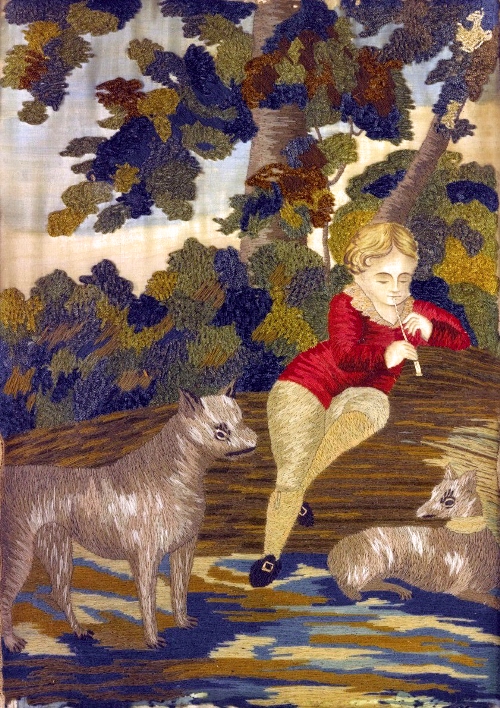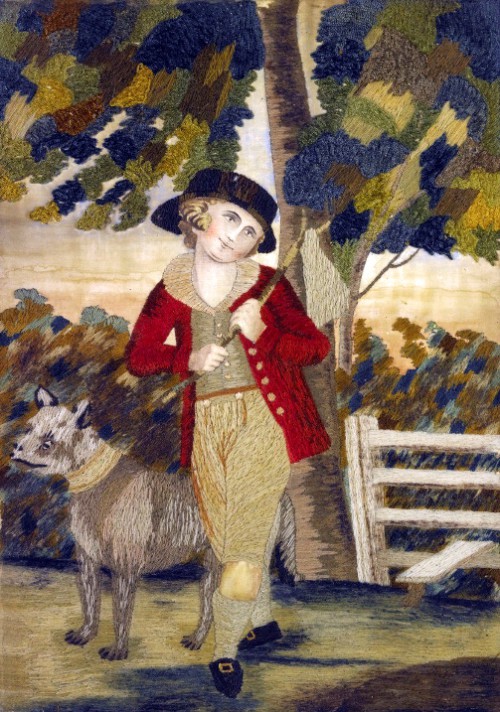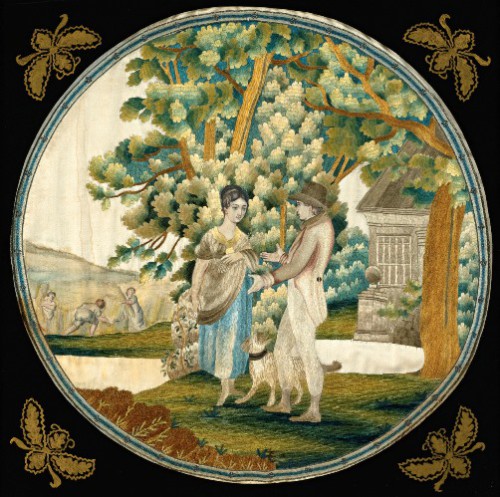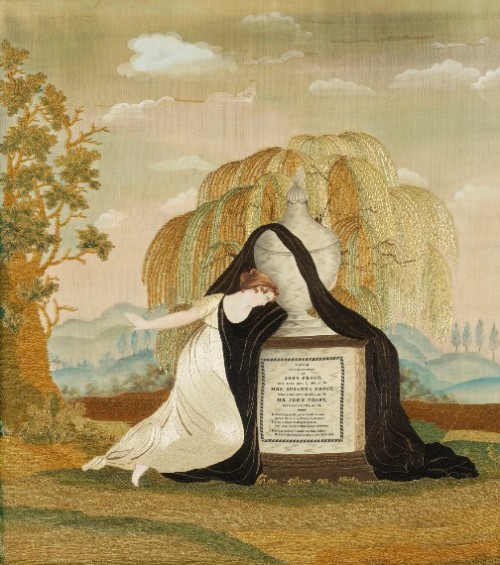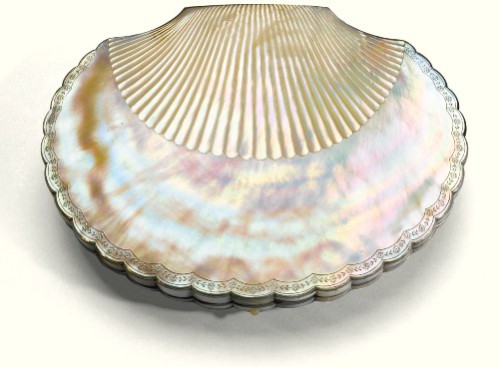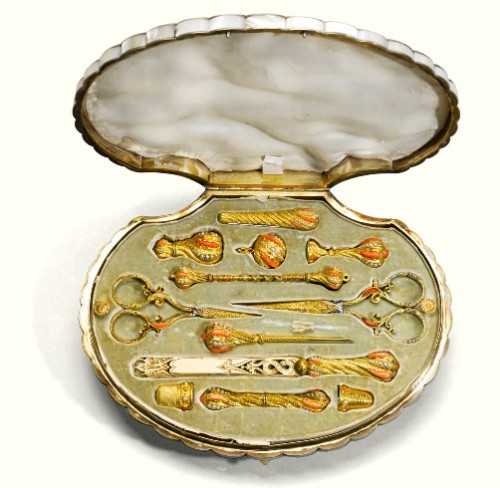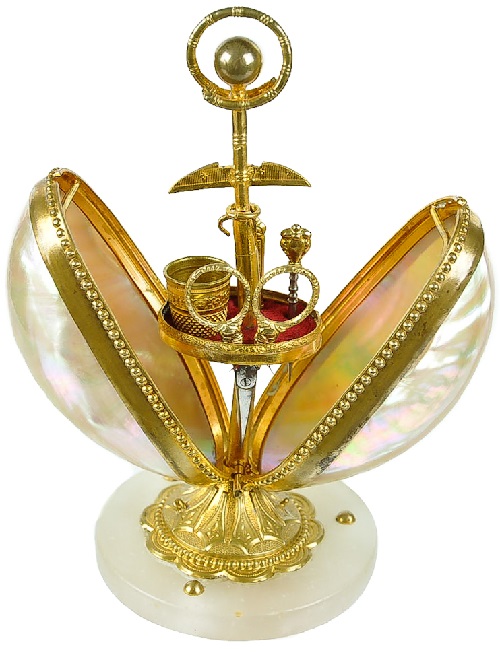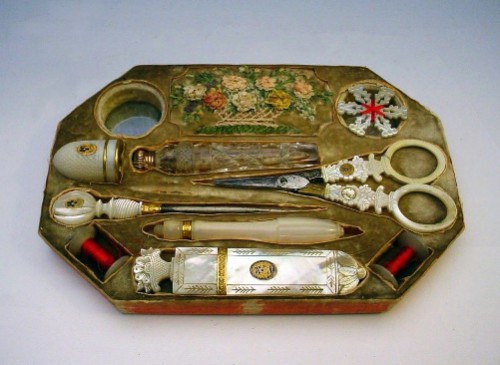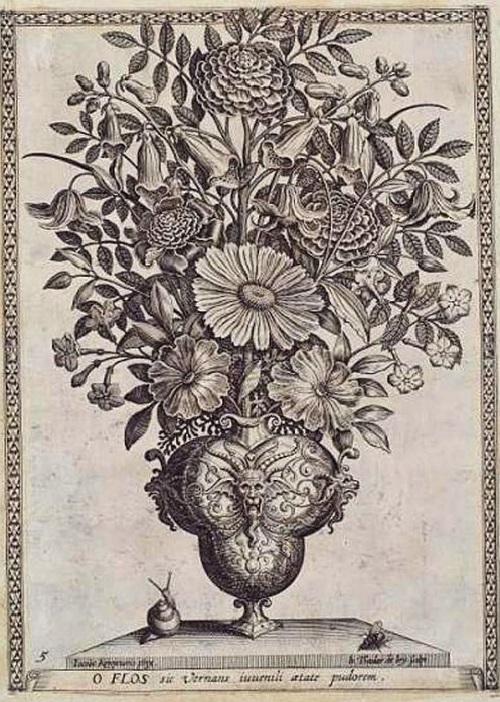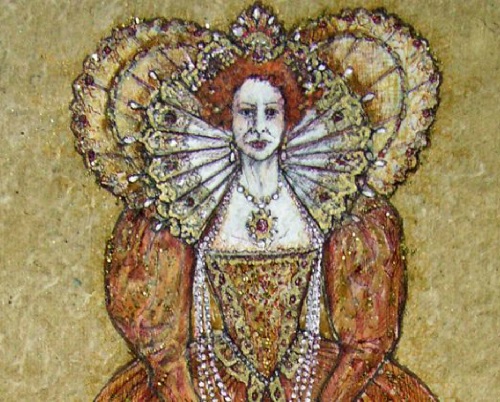Antique European embroidery art
The Metropolitan Museum of Art exhibits a unique collection of Antique European embroidery art of 15-19 centuries. The most striking sample of antique embroidery art is “Garden of Eden”, made in the 16th century in England. This panel is decorated with small elements—fruits, flowers, and leaves, worked in tent stitch on canvas and then applied to the dark velvet foundation on which was worked the river in the Garden of Eden, the figures of Adam and Eve, and God the Father, in polychrome silk and metal threads. The garden is monumental, almost overwhelming the figures.
The three trees that anchor the composition would have brought to mind the biblical description of trees in the Garden of Eden, the Tree of Life and the Tree of Knowledge of Good and Evil. The scene of Adam and Eve being expelled from Eden on the far right may also derive from a reading of contemporary vernacular English Bibles, rather than any pictorial convention.
Adam and Eve wear garments that suggest articles of late Elizabethan dress and the Geneva Bible of 1560 referred to their first clothes as “breeches.” In this and other embroidered renderings of the story of the expulsion from Eden, Adam and Eve are treated more gently by God and the expelling angel than they are in contemporary print sources.
This embroidered wall hanging depicts an episode from the Table of Cebes, a once renowned literary work of ancient Greece. The story is as follows: Strangers visiting the temple of Saturn in Thebes are attracted by a tablet on the wall which bears a mysterious design. An old man, noticing their puzzled expressions, explains that the design symbolizes the course of human life, its trials and eventual rewards. His interpretation applies the Socratic doctrine that only the education of the mind and the consciousness of virtue can lead to happiness. Life, the old guide explains, is shown as a plot of ground contained within a wall and subdivided by two other concentric walls, each with a gate. At the gate of the outermost wall are the souls of infants about to enter life. As each passes through the portal into a large enclosure and becomes a young wayfarer, he meets various allegorical figures of dubious virtue, who point out the easy pleasures of existence. Drunk with the wine of Error and Ignorance, with which he has been plied, the average wayfarer devotes himself to riotous living and soon enough endures the usual aftermath of pain and misery. When all seems lost, Penitence rescues him, and at length he reaches a gate of the inner wall, beyond which are found those who, seeking Learning, are misled by False Learning. The arts and sciences and the more polite vices take up much time in this pleasant region. The wayfarer might discover, however, even from False Learning, information that could be useful on the last lap of the journey. Thus fortified, some wayfarers carry on and, after a painful pilgrimage, reach the innermost gate, guarded by the figure of True Learning, beyond which is happiness and journey’s end.
Depicted in the Museum’s embroidery is the second leg of the journey: the young wayfarer joins the sophisticated denizens of the Garden of False Learning. The embroidery appears to have been made by or for the Limousin family Fenis de Prade, a provenance indicated by coats of arms, and after 1547, the date of the woodcut by Strasbourg artist David Kandel that served as model for some of the figures.
Panel from an Altar Frontal – The Flagellation, mid–14th century. Made in Florence, Italy.
Silk and metallic threads on linen. The work of Florentine embroiderer Geri Lapi. More than twenty shades of silk and metallic threads give richness to the design, and the gold background is enlivened with raised scrolling vines. The Flagellation is one of twelve panels attributed to Geri Lapi depicting the life of Christ, of which nine are in the Museum.
Vintage embroidery 18-19 century.
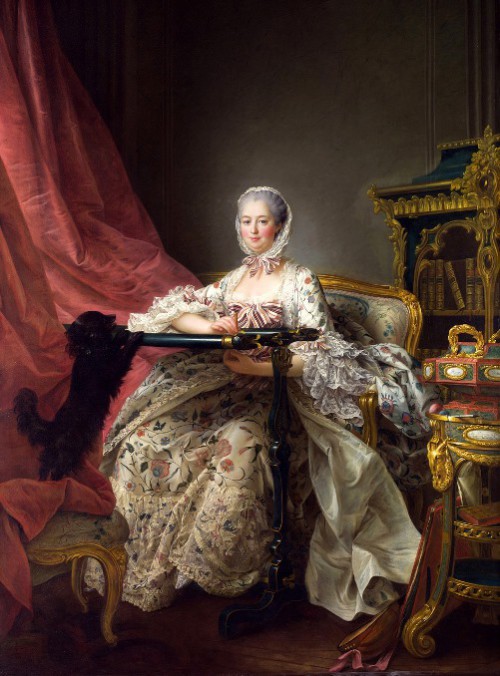
Commemorative Portrait of Madame de Pompadour. French painter François-Hubert Drouais (December 14, 1727 – October 21, 1775)
Commemorative Portrait of Madame de Pompadour. French painter François-Hubert Drouais (December 14, 1727 – October 21, 1775). In the 19th century, the craft of embroidery was actually a favorite pastime for wealthy ladies. Such hobby was depicted in the paintings of old masters, who painted portraits of beautiful ladies busy with their crafts.
Antique European embroidery tools:
